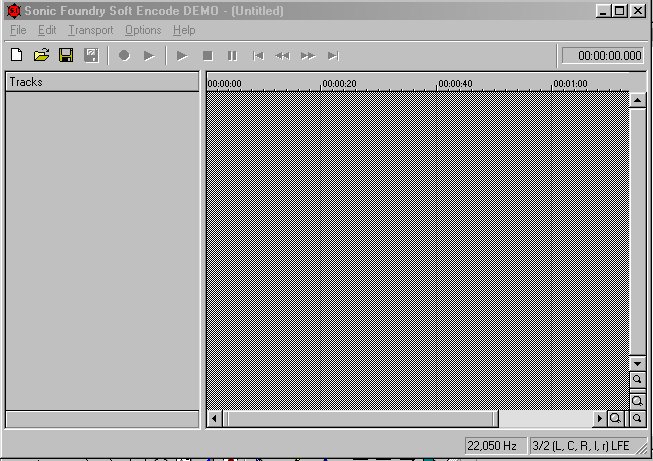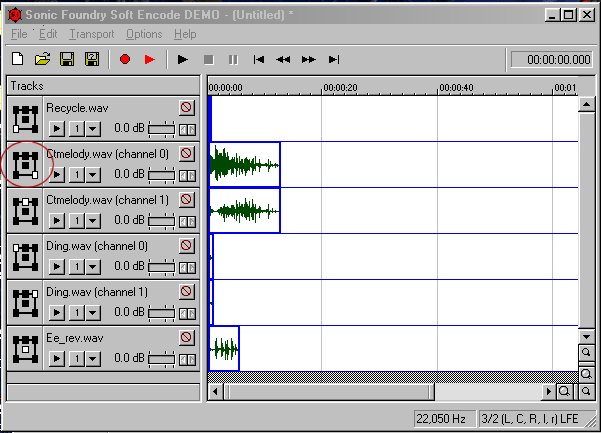| Friendly Expert Computer Help - In Plain English | |||

|
|
|
|
|
|
|
|
|
| PC911 > How-To > Miscellaneous > Once More Into The Fire |
Writing 5.1 Surround Sound to a CDR
Here is something that will impress your friends - writing some surround sound audio into an audio CDR. "How is that impressive", you ask. "After all, isn't it just like writing normal audio CDs?" The answer is no. The file format used for Dolby Digital AC3 format is quite different. To fully appreciate the elegance of writing 5.1 surround to a CDR, you will need to read up on AC-3 standards and audio remixing. Suffice it to say that if you asked the professionals, they will tell you there is no cheap way of writing AC3 audio to a CDR.
As always though, someone smarter always comes up with a solution. That someone is Mike Sokol of EQ Magazine. The material discussed below is derived from his excerpts. You can read the articles at http://www.soundav.com/letter.html.
As you all may well know, a 5.1 AC-3 audio streams consists of 5 channels of audio (Left, Center, Right, Left Surround, Right Surround) and one subwoofer channel, more properly known as the LFE, low frequency effects channel. To create a 5.1 audio stream, you cannot use a simple WAV file as it does not have any implementation for surround sound. Instead, what you will need to do is to store the audio for each of the six channels in its own WAV file and then encode those six wave files into an AC3 stream and write that to the CD. The AC3 file will have a WAV extension, but will not have the content nor structure of a normal wave file. If played on a standard CD player without the decoder, it will produce loud, obnoxious sounds that could potentially damage your speakers.
Are you ready? Let's do it!
The first thing you need to do is to download Soft Encode by Sonic Foundary - http://www.sonicfoundry.com/ - which will encode the 6 wave files for you. The full version of the software costs about 1,000 dollars, a little steep for your normal consumer. Luckily, there is a demo version which you can download and use. The downside (and you knew that there is always a downside) is that you cannot actually encode the file. That feature is disabled. But let's not let that stop us. Maybe we can't encode, but we can still have some fun.

|
When you open Soft Encode, you should arrive at a screen similar to the one shown in the screen cap. Now click on the File menu and choose Open. Here is where you can choose to open the six (or less) WAV files you need to encode. Simply select them one after another. After you select them, click on Open. Now your screen should appear something like the this screen cap.

|
Notice that now there are six tracks (or however many files you opened). Each of them represents a channel. To select which wave file corresponds to which channel, you will have to use the little diagram I have circled in red. The diagram consists of 6 boxes. In any given one, five of them are black, and one white. Those six boxes represent the channels. The white one is the current channel to which the file is assigned. So if the box on the lower right side of the diagram is white, that means the file will be playing through the back right speaker. Note, however, that the box in the center of the diagram is not the center channel. It is the LFE channel, in other words the subwoofer channel.
After you assign the files to the different channels, you are ready to save the file. Click on File - Save As Wave. Now if the program had been the full version, you would have been presented with a dialogue box from where you could adjust what format to encode it to and such. Choose 3/2 and 448 for the bit rate. Encode the wave and write to your audio CD. And that's it. Once the CD is played in a DVD player with AC3 decoding, you should hear the surround channels. One note though, since this is a make shift technique, some DVD players will not play them, notably the pioneer DVD players. But it works on a majority of the players. So if you ever wanted to impress friends, this is the trick to pull.
| Back To Top Of Page | ||
|
[PC911 Home]
[News]
[How-To's]
[Tips & Tweaks]
[Reviews]
[Freeware]
[Best Prices]
[Links] [Search] [About PC911] [Link To PC911] [Support PC911] [Legalese] ©Copyright 1998-2022 PC911 Webmaster |
||